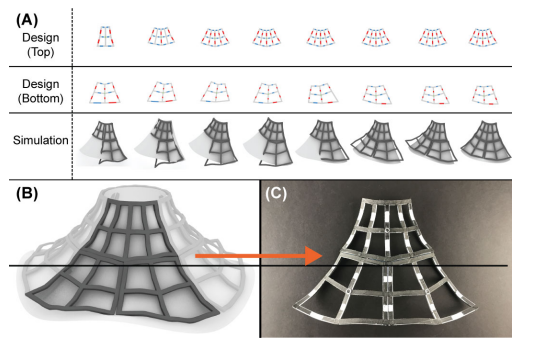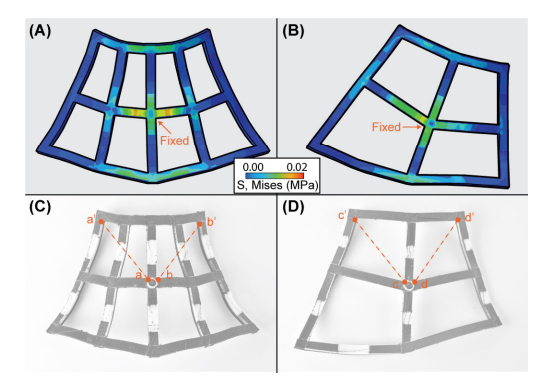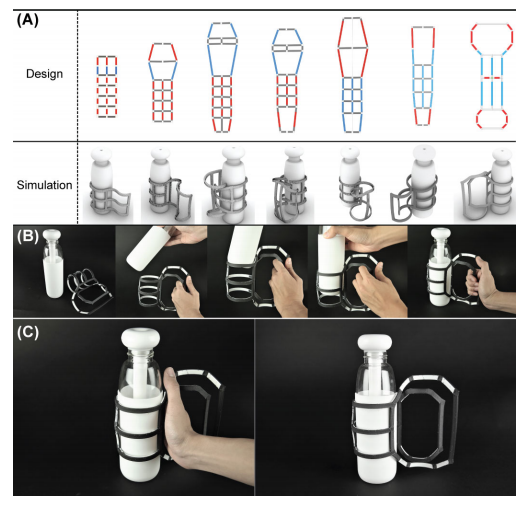In ‘Thermoplastic Fiber Reinforced Composite Material Characterization and Precise Finite Element Analysis for 4D Printing,’ researchers are delving further into the next dimension. And while the 3D realm is barely tapped in so many ways, taking it to the next level offers greater functionality for many scientists, engineers, designers, and innovative users curious about shape-changing materials.
Here, the focus is on FDM-based 4D printing, with the use of thermoplastics for creating artifacts. In studying issues regarding weakened structural load and limited design quality, the researchers worked with a structure fabricated from polylactic acid (PLA) and carbon fiber reinforced PLA (CFPLA). Their goal was to strengthen the 4D printed artifacts, along with creating a workflow comprising physical experiments and dynamic mechanical analysis (DMA) for materials characterization. The workflow was then used for the samples created with different printing parameters for analysis.
Printing methods in 4D do still have numerous limitations, from issues with lack of stiffness to inaccurate numerical simulation, and a range of challenges with materials and mechanical properties and performance. As for simulation, the researchers also state that the processes must be more accurate and the materials must be stronger for 4D printing. Their answer was to use carbon-fiber PLA (CFPLA), a material easy to 3D print and also to mix with PLA to make a bi-layer fiber-reinforced composite (FRC).
“By programming the printing path, FRC can be conveniently and effectively designed and fabricated layerwise, and the accuracy of FRC design can also be improved,” stated the researchers.
Ultimately, the team created three designs for their study, employing the classic benefits of 3D printing, from the ability to create numerous versions without having to go back to the drawing table for a new prototype, along with speed in production, and affordability. They created the following:
- Modular lamp cover – divided into the 2×4 grid as the top section, a 2×2 grid for the bottom left, and a 2×2 as the bottom right.
- Bottleholder – sized at approximately 500mm x 200mm.
- Shoe support – an adaptation piece, consisting of a top and a bottom

Modular lamp cover design iterations. Results show the lamp cover pieces can fit the lamp quite well after eight iterations.

Final configurations from simulation (A-B) and experiment (CD), where a-a’, b-b’, c-c’ and d-d’ are four different point pairs. Simulation accuracy is quantified by comparing the distance between each point pair in simulation and the corresponding distance in experiment.

Bottle holder design iteration. Results show the bottle holder can fit
the bottle quite well after six iterations.

The design iteration of the shoe supporter. The shape of the shoe
supporter design is finalized to fit the shape of the foot by going through this iterative process
“To accurately conduct the simulation, experiments have been conducted to quantify the hyperelasticity and viscoelasticity of the thermoplastic component of FRC. These tests include uniaxial tensile and compression tests for the elastic component, DMA for the viscous component and uniaxial unloading-reloading with different strain levels for plastic deformation and the Mullins effect,” concluded the researchers.
“The accuracy of our method is both computationally and experimentally verified with several creative design examples and is measured to be at least 95%. We believe the presented workflow is essential to the combination of geometry, material mechanism, and design, and has various potential applications.”
Today it seems as if 3D printing and 4D printing are almost growing in tandem, as so many new materials are studied and put into use depending on a wide range of research studies as well as users on every level. From innovating with actuators to improving performance, and printing with composites, a wide range of studies continue to be performed.
What do you think of this news? Let us know your thoughts! Join the discussion of this and other 3D printing topics at 3DPrintBoard.com.
[Source / Images: ‘Thermoplastic Fiber Reinforced Composite Material Characterization and Precise Finite Element Analysis for 4D Printing’]Subscribe to Our Email Newsletter
Stay up-to-date on all the latest news from the 3D printing industry and receive information and offers from third party vendors.
You May Also Like
Precision at the Microscale: UK Researchers Advance Medical Devices with BMF’s 3D Printing Tech
University of Nottingham researchers are using Boston Micro Fabrication‘s (BMF) 3D printing technology to develop medical devices that improve compatibility with human tissue. Funded by a UK grant, this project...
3D Printing Webinar and Event Roundup: April 21, 2024
It’s another busy week of webinars and events, starting with Hannover Messe in Germany and continuing with Metalcasting Congress, Chinaplas, TechBlick’s Innovation Festival, and more. Stratasys continues its advanced training...
3D Printing Webinar and Event Roundup: March 17, 2024
It’s another busy week of webinars and events, including SALMED 2024 and AM Forum in Berlin. Stratasys continues its in-person training and is offering two webinars, ASTM is holding a...
3D Printed Micro Antenna is 15% Smaller and 6X Lighter
Horizon Microtechnologies has achieved success in creating a high-frequency D-Band horn antenna through micro 3D printing. However, this achievement did not rely solely on 3D printing; it involved a combination...





























